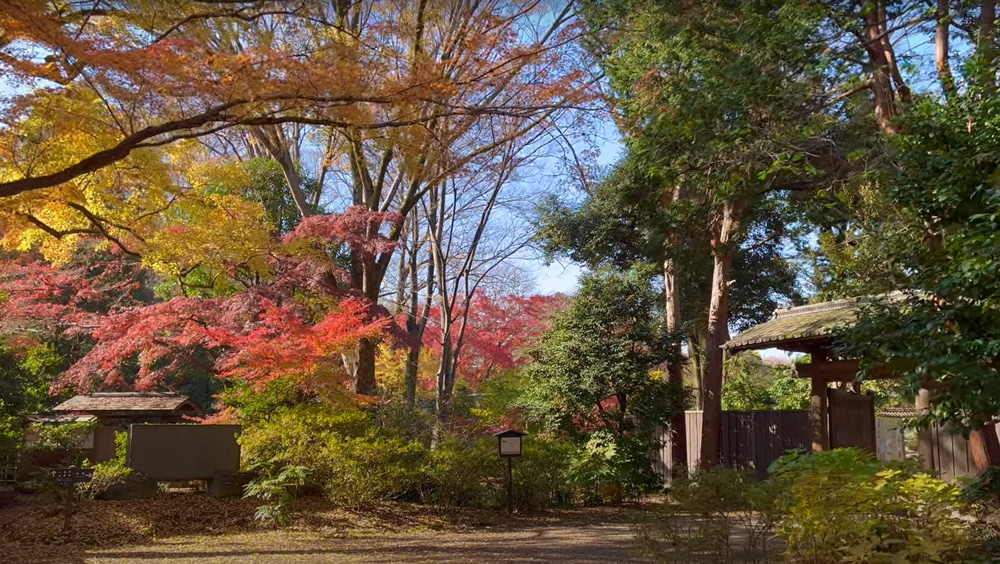Introduction
Rikugien Garden is one of Tokyo’s most beautiful Japanese landscape gardens, blending poetry and nature in perfect harmony. Built around 1700 during the Edo period, this renowned garden attracts numerous visitors with its elegant design and seasonal beauty. Walking through Rikugien feels like stepping into a beautiful waka poem, offering a profound experience of Japanese garden artistry.
Key Information
- Location: 6 Chome-16-3 Honkomagome, Bunkyo City, Tokyo
- Established: Circa 1700
- Area: Approximately 8.8 hectares
- Garden Type: Strolling garden
- Main Features: Central pond, artificial hills, teahouses, maple groves
Rikugien Garden Historical Background
Rikugien was built by Yanagisawa Yoshiyasu for the 5th Tokugawa Shogun, Tokugawa Tsunayoshi. The name “Rikugien” refers to the six styles of waka poetry in the Man’yōshū. The garden recreates 88 miniature scenes from famous waka poems. As an outstanding example of an Edo period daimyo garden, it showcases the aesthetic ideals and garden art of the time. After years of restoration and maintenance, Rikugien was designated as a Special Place of Scenic Beauty in 1938 and is now managed by the Tokyo Metropolitan Government.
Main Attractions
Central Pond
The largest feature in the garden, named “Shinjiike” for its heart-like shape. Surrounded by meticulously designed artificial hills and woodlands, it creates a rich natural landscape. Small islands and curved bridges dot the pond, embodying typical Japanese garden aesthetics. In spring, visitors can enjoy blooming azaleas along the shore, while autumn brings a spectacular display of fall foliage. Viewing platforms around the pond offer panoramic views and a chance to appreciate the changing seasons.
Fujishirotoge Viewpoint
Located at the highest point in the northwest corner of the garden, about 35 meters above sea level. This spot offers a sweeping view of the entire garden and is a must-visit for photography enthusiasts. In autumn, the vista of colorful foliage is particularly breathtaking, with golden yellows, vibrant oranges, and deep purples creating a stunning autumnal tapestry.
Togetsukyo Bridge
An elegant arched bridge spanning a small stream, it’s one of the garden’s most iconic structures. Inspired by Heian period waka poetry, the bridge reflects the traditional Japanese reverence for the moon. The gentle flow of water beneath and the reflections of surrounding trees create a picturesque scene. On full moon nights, the moonlight on the bridge and water surface creates a dreamlike atmosphere.
Teahouses
Several teahouses are scattered throughout the garden, with Fukiage Chaya being the most famous. Located on the northwest shore of the pond, it’s an ideal spot for enjoying tea and rest. The simple, elegant architecture of the teahouse embodies the wabi-sabi aesthetics of Japanese tea culture. Visitors can enjoy matcha and traditional Japanese sweets while taking in the garden views.
Weeping Cherry Trees
Near the main entrance, century-old weeping cherry trees are one of the garden’s most popular attractions in spring. From late March to early April, their cascading pink and white blossoms create a stunning display. A rest area under the trees allows visitors to picnic or relax, fully immersing themselves in the romantic cherry blossom atmosphere.
Maple Grove
Rikugien is famous for its autumn foliage. The garden boasts numerous varieties of maple trees, including Japanese maples and trident maples. Late November to early December is the best time to view the autumn colors. During sunset, the golden light filtering through the red leaves bathes the entire garden in a fiery glow, creating a spectacular scene. The garden also hosts special evening illuminations during the autumn season, offering a unique view of the foliage under lights.
Best Time to Visit
- Spring (Late March – May): Cherry blossoms and azaleas in full bloom
- Autumn (Late November – Early December): Peak autumn foliage viewing
- Winter: Opportunity to see the garden covered in snow
- Summer: Lush greenery and a cool retreat from the heat
Access
From JR Yamanote Line or Tokyo Metro Namboku Line Komagome Station, take the south exit and walk 5-10 minutes to reach the main entrance at the eastern corner of Rikugien. Detailed signage and maps within the garden facilitate self-guided tours.
Hours and Admission
- Open: 9:00 AM – 5:00 PM (Last entry at 4:30 PM)
- Extended hours until 9:00 PM during autumn foliage and cherry blossom seasons (typically mid-November to early December, and late March to early April; check official website for exact dates)
- Closed: December 29 to January 1
- Admission: Adults 300 yen, Seniors (65 and over) 150 yen, Elementary school children and younger free
Visitor Tips
- Allow at least 1-2 hours for your visit; a leisurely pace is recommended to fully appreciate the garden’s beauty
- Wear comfortable walking shoes as some paths may be uneven
- Check bloom/foliage forecasts in advance for spring and autumn visits
- Bring cash for admission; some facilities may not accept credit cards
- Respect the environment: don’t touch or damage plants, and keep the garden clean
- Bring a camera to capture the beautiful scenery
- Try matcha at Fukiage Chaya for an authentic tea ceremony experience (additional fee applies)
Official Website
Conclusion
Rikugien Garden is a classical Japanese garden that beautifully combines poetry and nature, offering visitors a unique visual and cultural experience whether in the cherry blossom-filled spring or the fiery-leaved autumn. More than just a scenic spot, it’s a window into traditional Japanese garden art and culture. As you stroll through Rikugien, you can temporarily escape the urban hustle and immerse yourself in this poetic oasis. Consider including a visit to this picturesque garden in your Tokyo itinerary, and let it add an unforgettable touch of poetic beauty to your journey.
